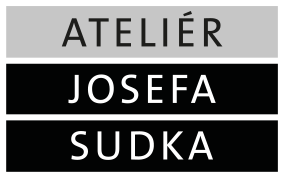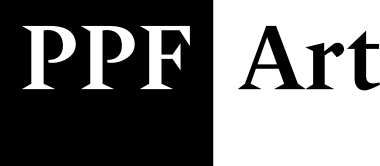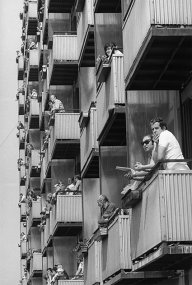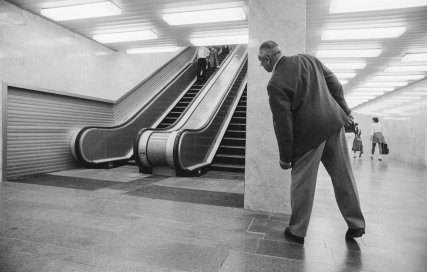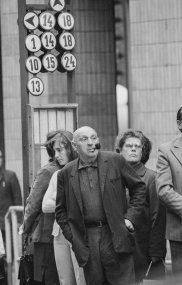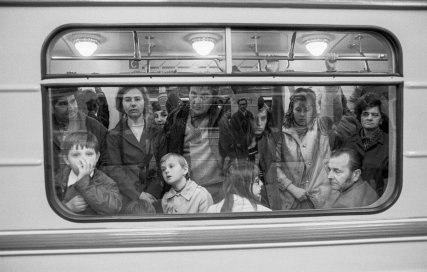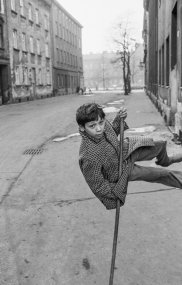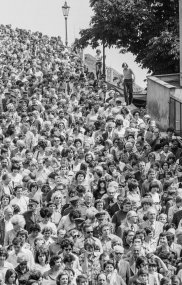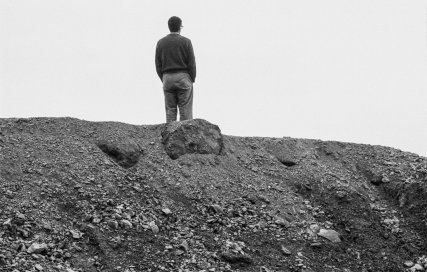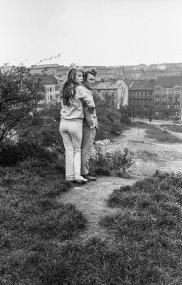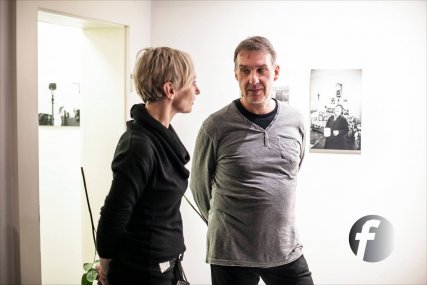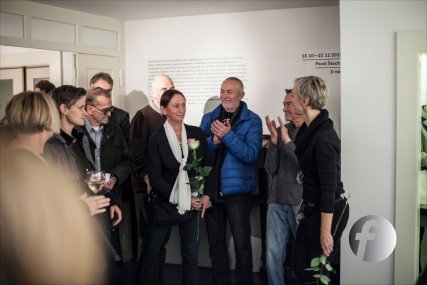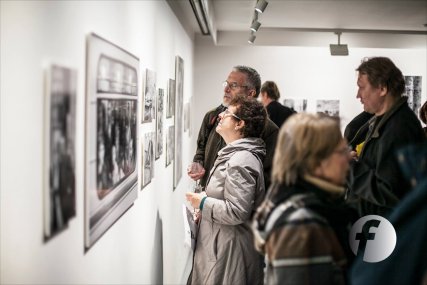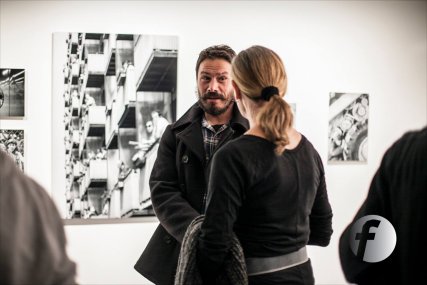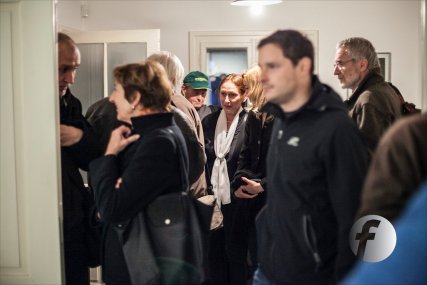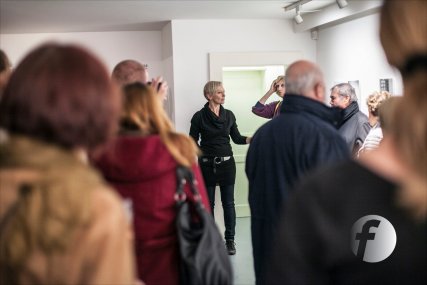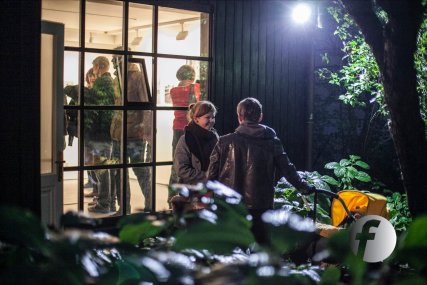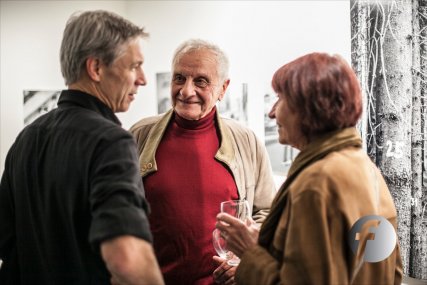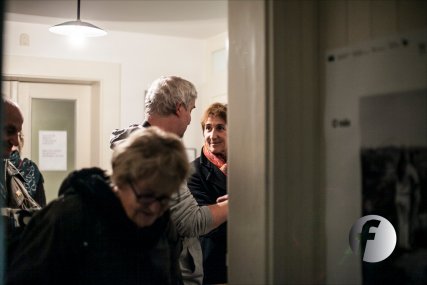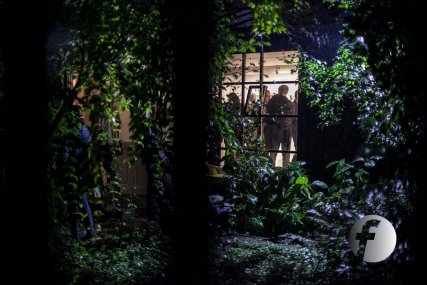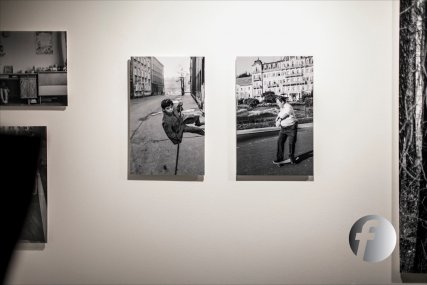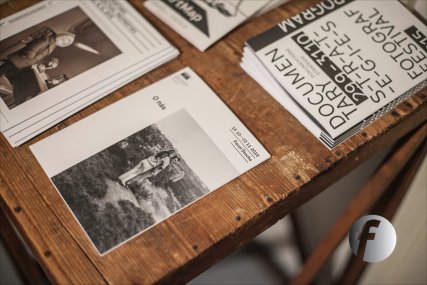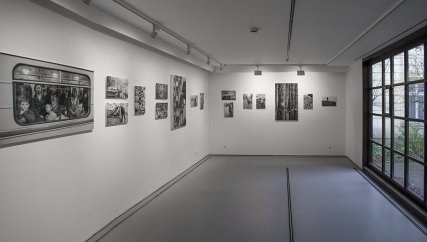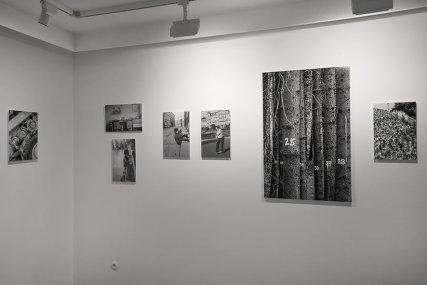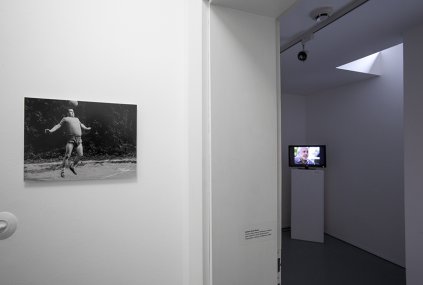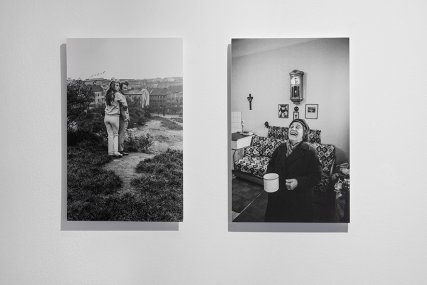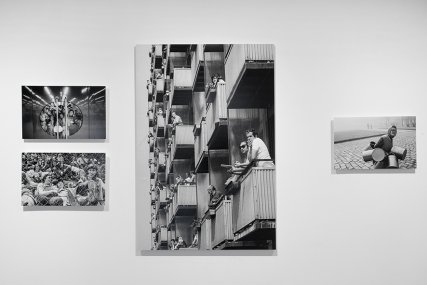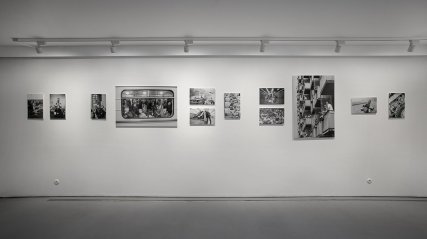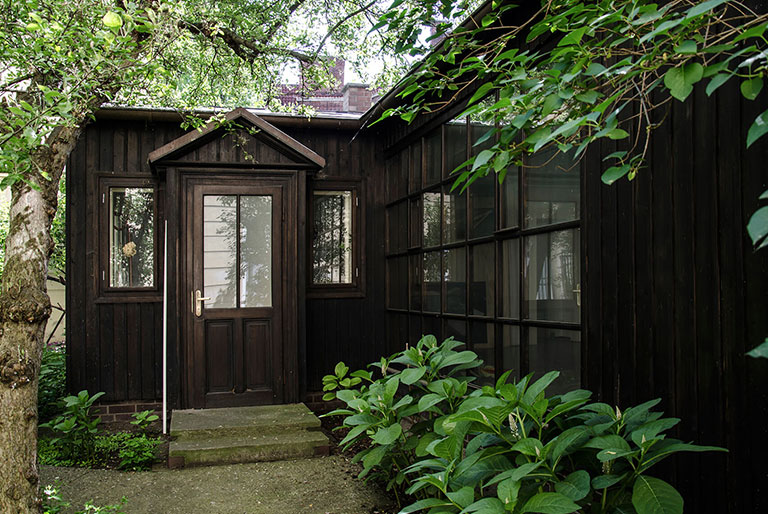Archive
Pavel Štecha
O nás
16. 10. — 22. 11. 2015
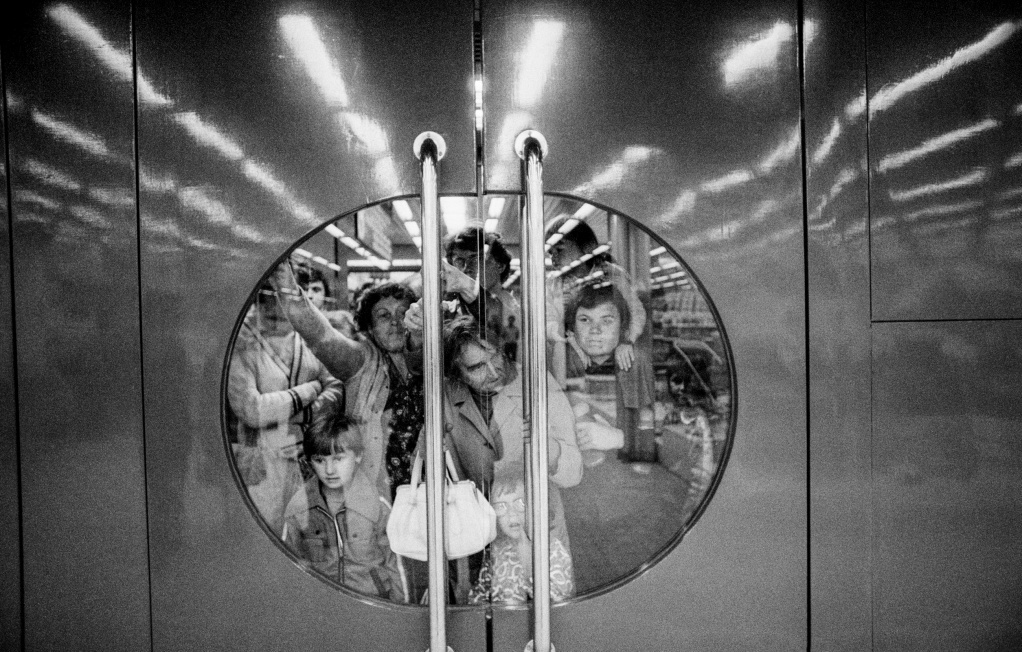
As a photographer, Štecha was mainly a commentator on events. That was his strongest side. As a commentator he was someone who participated yet stood apart.
I began to understand the documentary photographs of Pavel Štecha (1944–2004) only as I got older. In the 1980s, his cool, analytical approach said little to me. His photographs seemed to me banal and pictorially unattractive. I failed to notice their sophisticated matter-of-fact quality and that they were each making a point, not to mention their irony and other humour, which are just some of ways to interpret Štecha’s photographs. The humour is subtle, unobtrusive, always respectful of those he is interested in.
As a photographer, Štecha was mainly a commentator on events. That was his strongest side. As a commentator he was someone who participated yet stood apart. His being slightly aloof, which one senses in the photographs, corresponded, I believe, to his life-long outlook and reflected his personality. He was a member, indeed an initiator, of an association of cyclists, cross-country skiers, and tourists. As a photographer, he preferred to work with like-minded architects and sociologists. As a teacher, he was perhaps most attracted to creating a ‘studio family’. They formed his sovereign territory. Everything else was the outside world. It was of fundamental interest to him, but he shared his fate with it warily.
Typical of his style is the truthfulness of expression, free of the crutch of visual effects. All the more precisely and well considered, then, was his use of the photographic language. His photographs are often outwardly ordinary; his prints are never excessively polished. The viewer’s full attention is directed at the message and the point of each photograph, which Štecha achieved by stripping the picture of everything superfluous. Each photograph was meant to stand on its own, but at the same time he always thought about making a statement in large sets, in which the individual photographs compose the whole, creating a picture of reality as he perceived it. He always insisted on an analytical and intellectual approach to the topic; he was interested in the whole context of his topic, which he explored by means of photography. His subjective vision is reflected in the grey reality of his times and at the same time provokes a confrontation with the generally accepted view. For that reason too, probably, he worked on many sociological studies practically from his beginnings as a professional in the early 1970s, and a number of the photographs that are today considered work he made strictly for himself were actually made as parts of such commissions. His inquisitiveness and the honesty of his approach led him further than merely carrying out an assignment. But that was to some extent also a feature of the times – the world back then was not racing madly forwards, and it allowed one the luxury of concentrating more intensely and over a longer period on certain topics, at least in certain propitious constellations. In addition, works of this kind mostly tended to be made despite the political system, and such photographs therefore also contained a level of something oppositional, that is to say, they are emotionally free.
I recall a debate with Štecha in the early 1990s, when he was the picture editor of the Prostor daily. I argued with him then a bit about the ability of documentary photography to contribute to social change. He was very sceptical of my youthful faith in this feature of the photographic image. With his photographs, Štecha did not try to change the world. Perhaps, however, his documentary photographs, even many years later, show that with his particular language of expression he succeeded in saying something universally valid about the world he lived in, in other words, about us.
Michal Hladík
September 2015
Show moreShow less
As a photographer, Štecha was mainly a commentator on events. That was his strongest side. As a commentator he was someone who participated yet stood apart. His being slightly aloof, which one senses in the photographs, corresponded, I believe, to his life-long outlook and reflected his personality. He was a member, indeed an initiator, of an association of cyclists, cross-country skiers, and tourists. As a photographer, he preferred to work with like-minded architects and sociologists. As a teacher, he was perhaps most attracted to creating a ‘studio family’. They formed his sovereign territory. Everything else was the outside world. It was of fundamental interest to him, but he shared his fate with it warily.
Typical of his style is the truthfulness of expression, free of the crutch of visual effects. All the more precisely and well considered, then, was his use of the photographic language. His photographs are often outwardly ordinary; his prints are never excessively polished. The viewer’s full attention is directed at the message and the point of each photograph, which Štecha achieved by stripping the picture of everything superfluous. Each photograph was meant to stand on its own, but at the same time he always thought about making a statement in large sets, in which the individual photographs compose the whole, creating a picture of reality as he perceived it. He always insisted on an analytical and intellectual approach to the topic; he was interested in the whole context of his topic, which he explored by means of photography. His subjective vision is reflected in the grey reality of his times and at the same time provokes a confrontation with the generally accepted view. For that reason too, probably, he worked on many sociological studies practically from his beginnings as a professional in the early 1970s, and a number of the photographs that are today considered work he made strictly for himself were actually made as parts of such commissions. His inquisitiveness and the honesty of his approach led him further than merely carrying out an assignment. But that was to some extent also a feature of the times – the world back then was not racing madly forwards, and it allowed one the luxury of concentrating more intensely and over a longer period on certain topics, at least in certain propitious constellations. In addition, works of this kind mostly tended to be made despite the political system, and such photographs therefore also contained a level of something oppositional, that is to say, they are emotionally free.
I recall a debate with Štecha in the early 1990s, when he was the picture editor of the Prostor daily. I argued with him then a bit about the ability of documentary photography to contribute to social change. He was very sceptical of my youthful faith in this feature of the photographic image. With his photographs, Štecha did not try to change the world. Perhaps, however, his documentary photographs, even many years later, show that with his particular language of expression he succeeded in saying something universally valid about the world he lived in, in other words, about us.
Michal Hladík
September 2015
Works on display (a selection)
Exhibition opening
Pavel Štecha
studios
1990Fulbright stipendium, USA 1967studium FAMU, katedra fotografie (1967-1971)study stay / internships
1981stáž na Uměleckoprůmyslové škole v Helsinkáchawards and appreciations
1992cena na World Press Photo, Amsterdam (V. Havel “poslouchá” Theodorika)projects implemented
2001“ U nás : 1968- 1990” autorská monografie, Studio JB, 2001 2000práce na knize Müllerova vila a na knize Černínský palác v Praze 1999fotografie v knize “Houses of the Century” GG (vila Müller) 1998Fotografická publikace roku “Praha - průchody a pasáže” 1998fotografie pro publikaci ABC NEWS “20th Century” 1996“Fotografická publikace roku” v kategorii kalendář 1994práce na projektu JOSIP Plečnik - architekt Pražského hradu (1994-1995) 1993založení Ateliéru fotografie na UMPRUMprofession
1992obrazový redaktor deníku Prostor 1991hostující učitel Missouri Workshop, USA 1990docent FAMU 1988hostující učitel na Nordens Fotoskola, Stockholm 1974pedagog FAMU (1974-1994)AtelierJosef Sudek
Ateliér Josefa Sudka
Admission 10 CZK
Újezd 30, 118 00 Prague 1, Czech Republic
Open daily except Monday 12 AM – 6 PM
Tel.: +420 251 510 760
Admission 10 CZK
/ free for students of art schools
